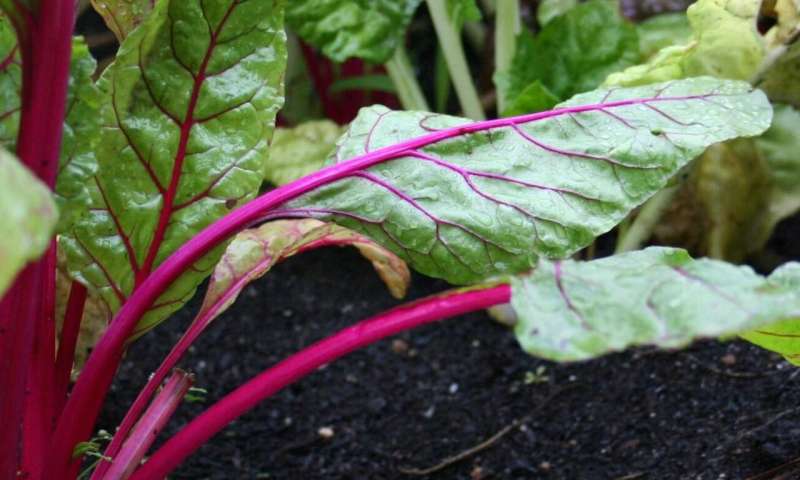
Earmarking more land for growing fruits and vegetables after Brexit could help to reduce deaths from cardiovascular disease.
These are the findings of a new analysis, published in the journal BMJ Nutrition, Prevention & Health, looking at the potential impacts of changes to agricultural policy as the UK leaves the European Union.
Researchers from Imperial College London and the University of Liverpool looked at the potential public health impacts of increasing the small proportion of suitable land currently used (less than one tenth) to grow fruit and vegetables in England, as part of a comprehensive strategy that targets both supply and demand.
They found that an increase of up to 20 percent of suitable land could potentially help to prevent more than 18,000 deaths by 2030, while an increase up to 10 percent could help to prevent an estimated 3,800 deaths.
According to the team, the UK should “seize this opportunity” to reform its agricultural policies through the new Agriculture Bill in order to boost public health and reduce health inequalities in the most deprived regions of the country.
“As the UK leaves the European Union it throws up a number of challenges around trade, business, the environment and the movement of people. But it’s also important we take steps to protect public health when thinking about Brexit’s impact on food production,” said Dr. Jonathan Pearson-Stuttard, from Imperial’s School of Public Health and senior author.
“Our research shows that changes to the new Agriculture Bill could substantially improve diets and potentially prevent thousands of deaths from heart disease and stroke. We should seize this opportunity to improve the health of the country.”
Agricultural policy
Currently, UK farming falls under common EU agricultural policy, but this will change as the UK transitions away from the EU and gives up its member status. The UK government has indicated its intention for post-Brexit reform, with a draft Agriculture Bill. But according to the researchers, this bill fails to explicitly take into account aspects of public health, which could ultimately be a “missed opportunity” to maximize health benefits.
In the study, the team incorporated data from multiple sources, covering fruit and vegetable production, agricultural land use, and cardiovascular disease risk in England. The researchers then modeled changes to the proportion of suitable land in England being used to grow fresh produce and the potential impact this could have on health outcomes.
Around 19 percent of agricultural land in England is suitable for growing fruit and veg, but only an estimated 1.4 percent of it (less than one tenth) is currently used to grow produce, as the country mainly relies on imports to meet its fruit and veg demand.
The team modeled the impact of increasing the amount of suitable land used to grow fruit and veg to up to 10 percent and 20 percent , estimating associated increases in fresh produce production.
The team assumed that this change in land use will coincide with policies that target fruit and vegetable demand by, for example, facilitating access, improving quality and diversity, and supporting promotion of fruits and vegetables, such that extra production will be consequently consumed domestically, after considering losses between agricultural supply and purchases, as well as household waste.
Under this assumption, fruit and veg consumption would increase substantially with increased farming production—with people eating up to 17.9 percent more fruits and up to 37 percent more vegetables.
The researchers estimate that the additional health benefits from additional portions of fresh produce would prevent or postpone approximately 3,890 and 18,010 CVD deaths between 2021 and 2030 (for an increase in fruit and veg land up to 10 and 20 percent of suitable land, respectively).
Increased consumption, decreased risk
The analysis also showed that both modeled increases in fruit and veg land would reduce inequalities in the UK, with 16 percent of prevented or postponed deaths occurring among the least deprived compared with 22 percent among the most deprived areas of the country.
Paraskevi Seferidi, a Ph.D. researcher at Imperial and first author of the study, said: “Our research assumed that extra production would be mirrored by extra consumer demand.
“For this to be possible, however, the post-Brexit agricultural policy should target the whole supply chain through a comprehensive strategy that increases demand as well as supply.
“A bold agricultural policy that increases consumption of fruits and vegetables by intervening across the supply chain can make the UK a global leader in integrating public health aims across public policy.”
Dr. Anthony Laverty, Lecturer in Public Health from the School of Public Health, added: “While almost one fifth of agricultural land in England is suitable for growing fruit and vegetables, we currently allocate less than 2 percent to produce.
“Our models suggest that increasing the amount of suitable land used could lead to an increase in the amount of fresh produce purchased, and eaten, by the public—increasing their health benefits and reducing their risk of cardiovascular disease.
“The link between a healthy and varied diet and reduced CVD risk is clear. This is an opportunity for the government to align agricultural policy with both the nation’s prosperity and health going forward.”
The latest analysis follows on from previous research, published in 2019, which looked at the potential impact of Brexit trade scenarios on the import of fresh produce.
Source: Read Full Article
